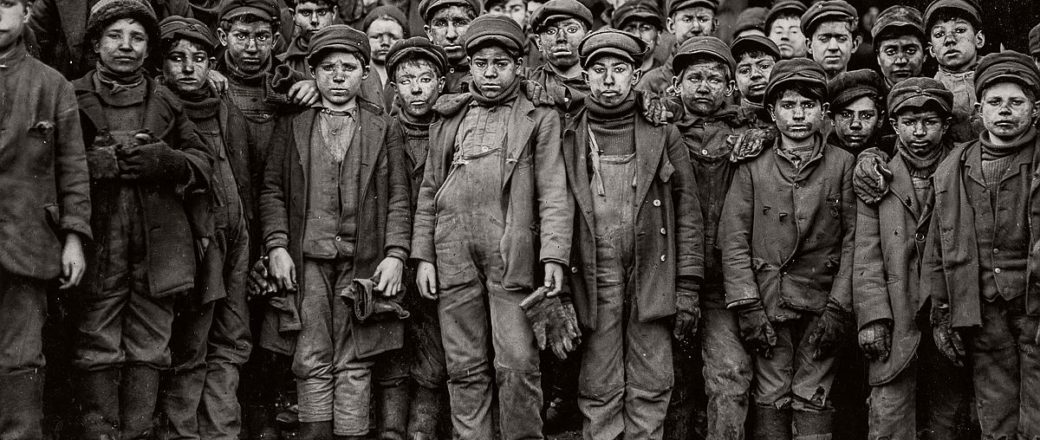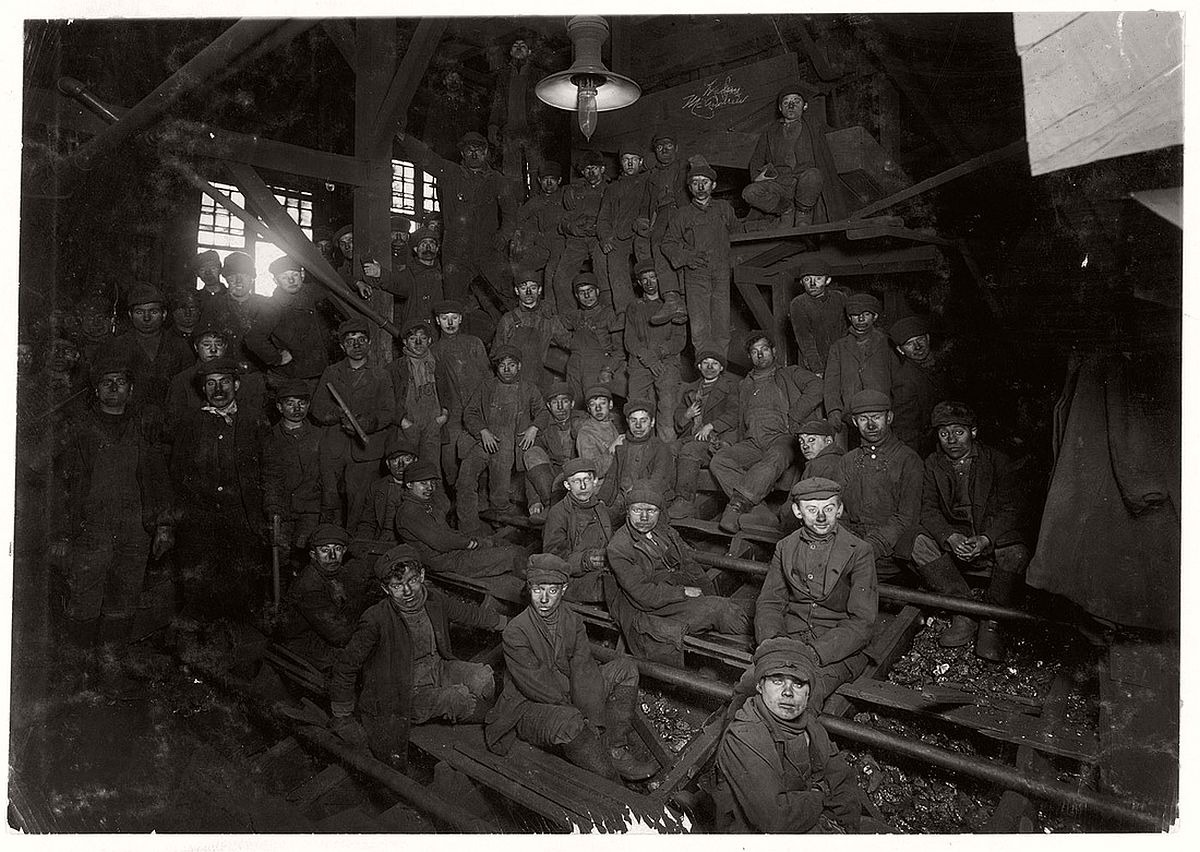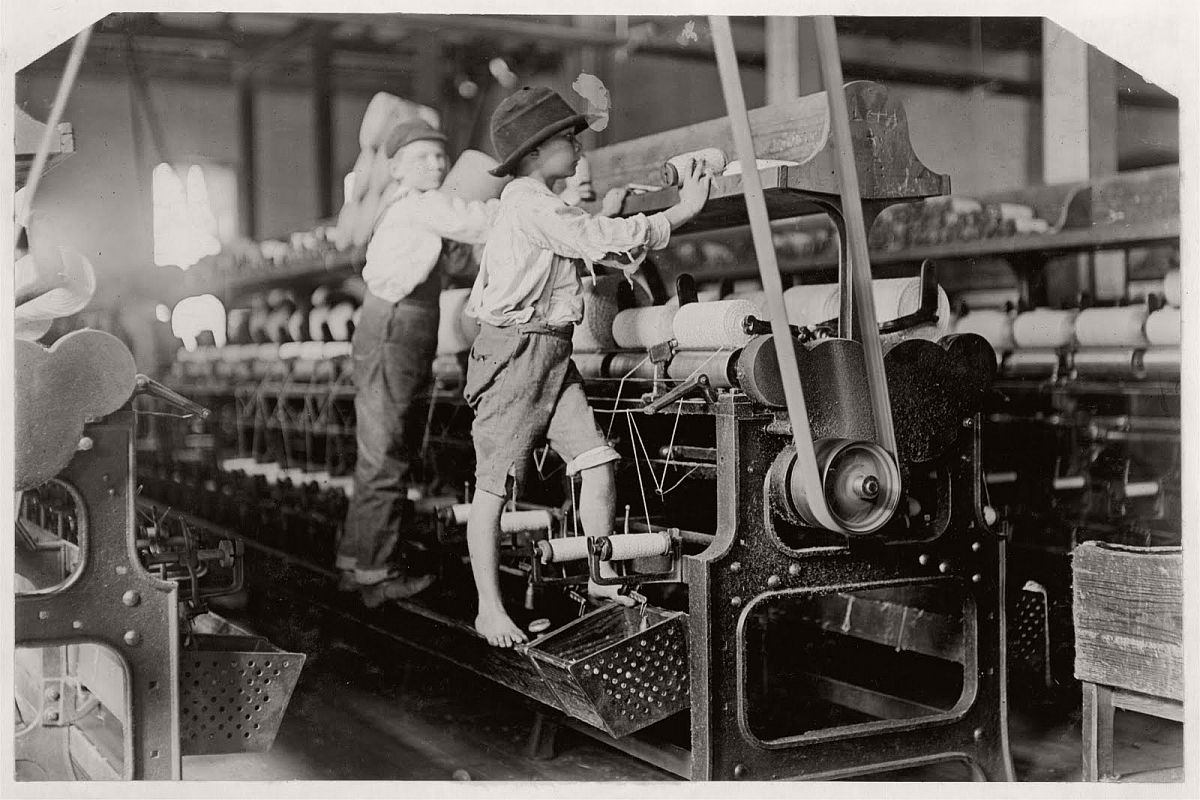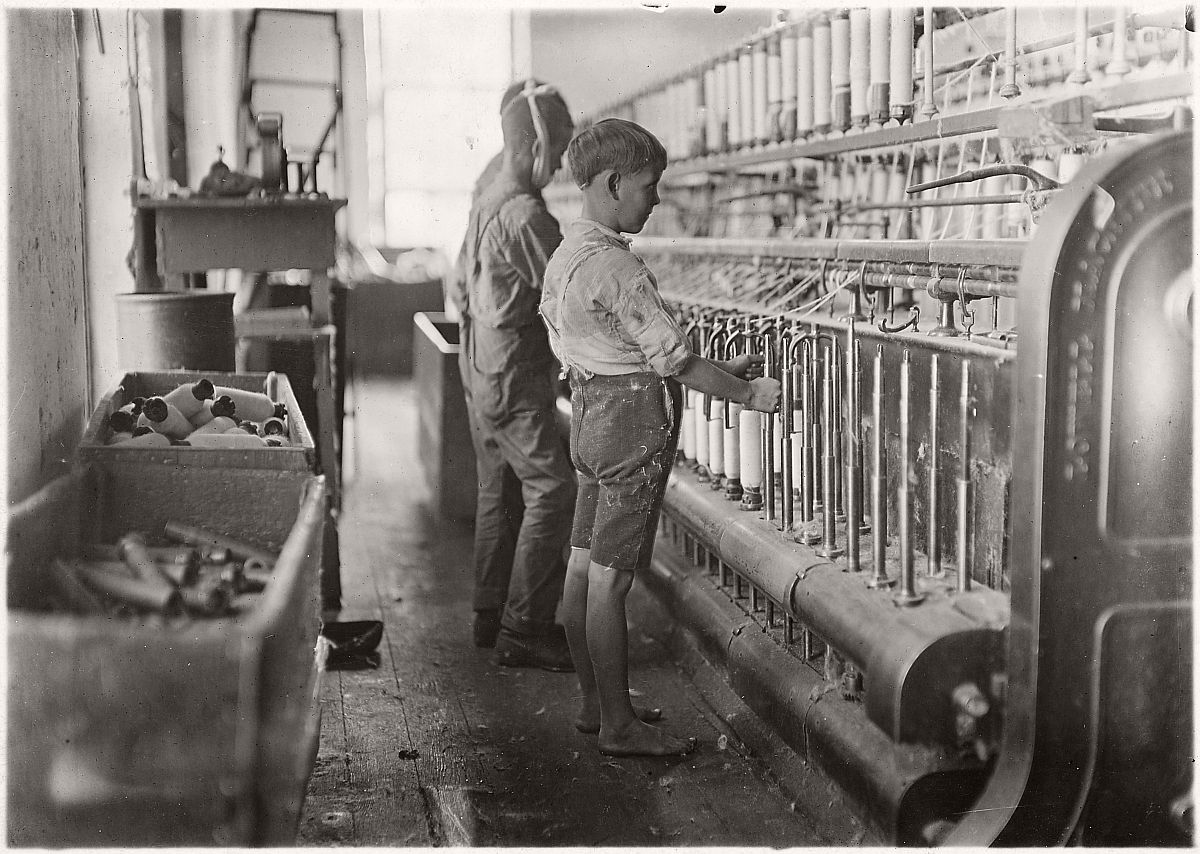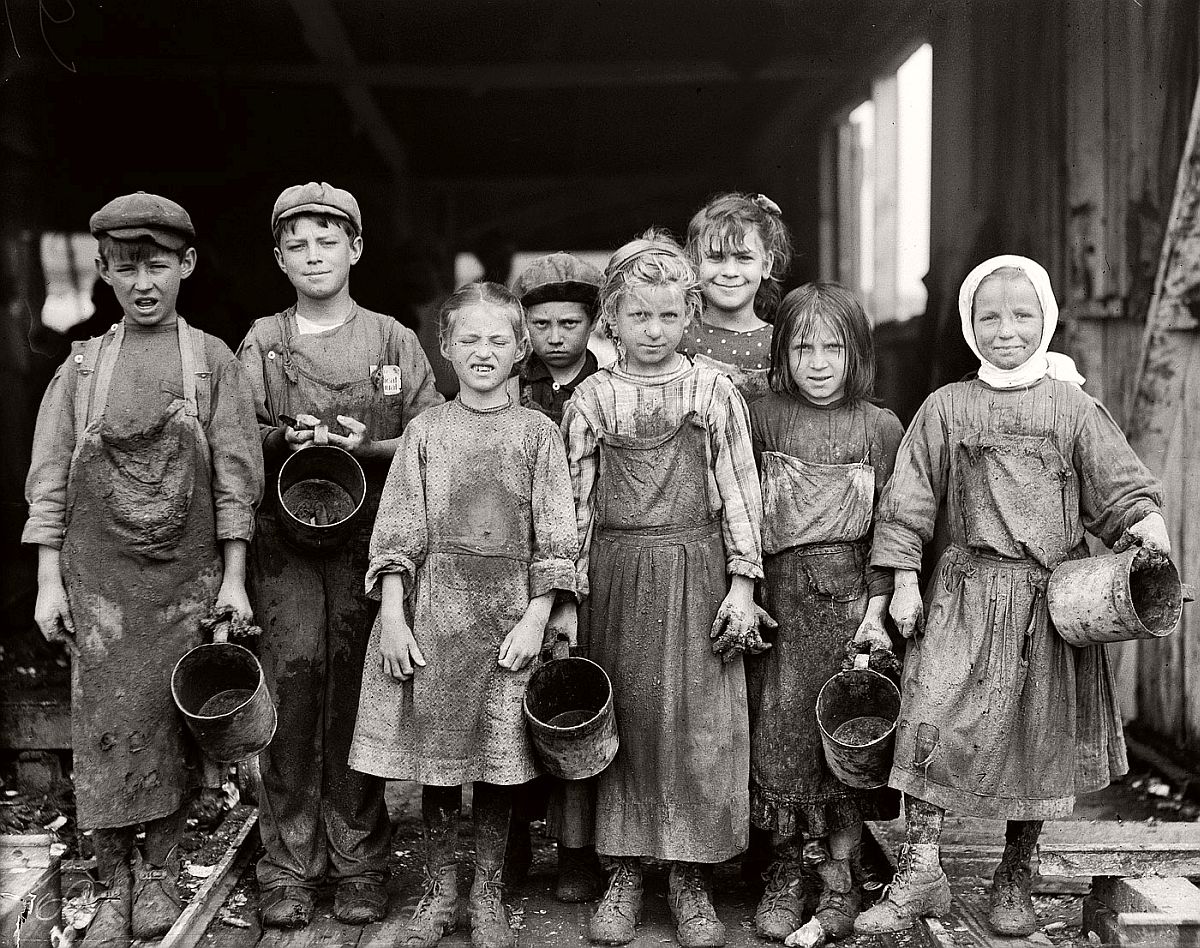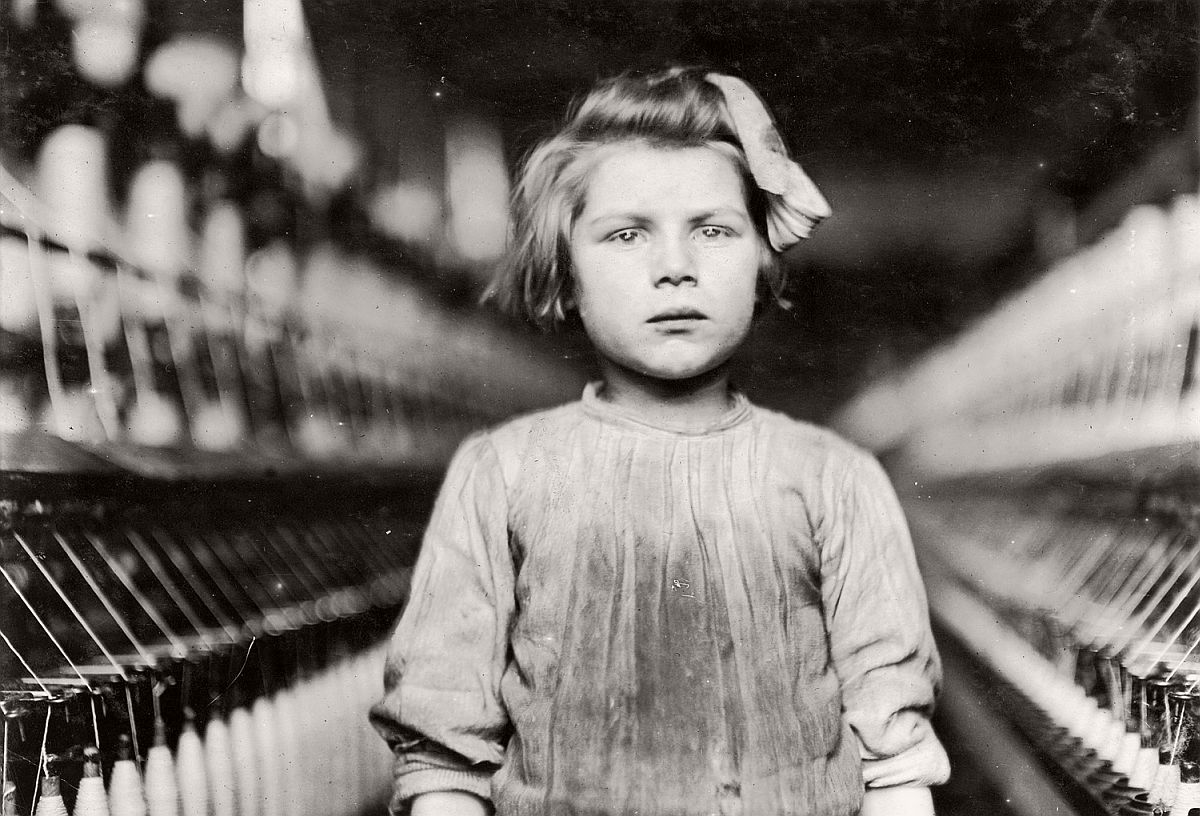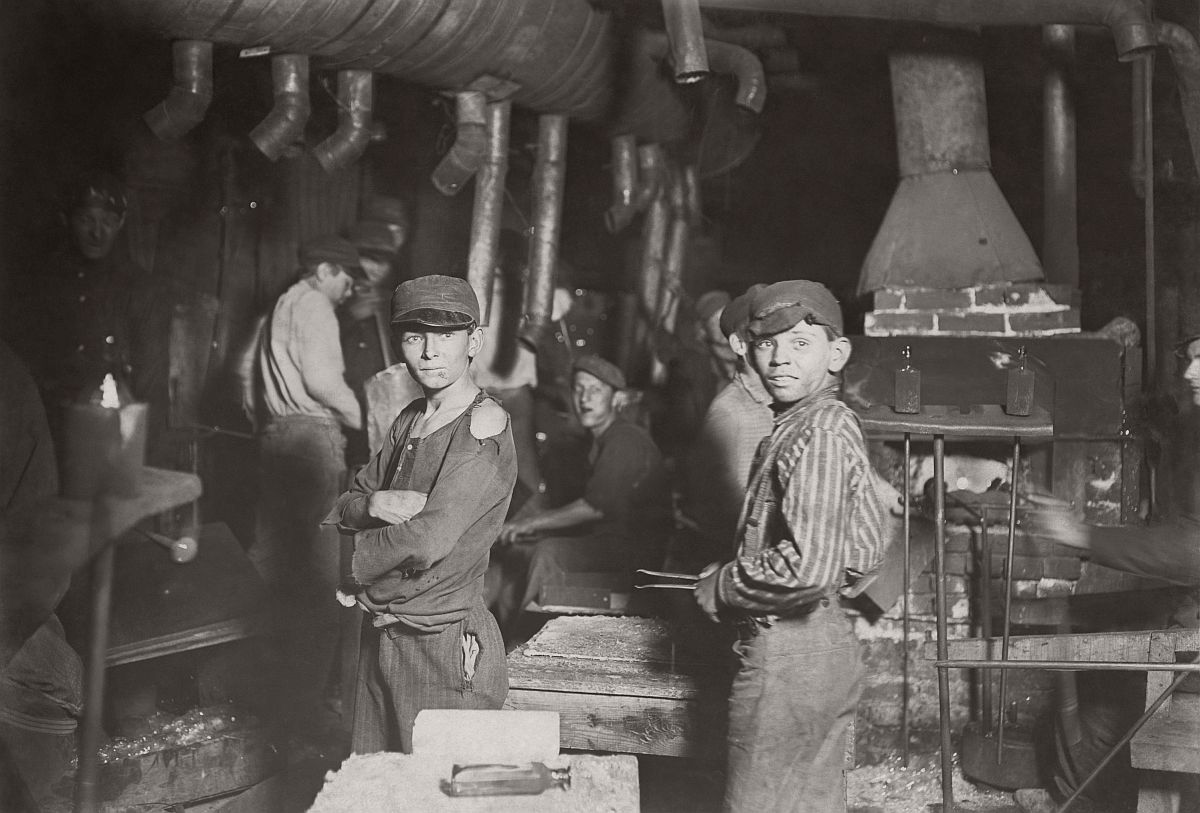The Cantor Arts Center at Stanford University is pleased to announce Soulmaker: The Times of Lewis Hine, a new exhibition that explores the artistic mastery of photographer Lewis Hine’s images of children working in mills and factories in the early 20th century. His works are among the most haunting photographs of children ever made. In this exhibition, a beautiful selection of these images is juxtaposed with stunning shots of those same mill and factory sites as they look today, taken by Jason Francisco (Stanford M.F.A., ’98).
In 1908, Lewis Hine felt so strongly about the devastating affects of child labor that he quit working as a New York City school teacher to become an investigative photographer for the National Child Labor Committee. Hine spent the next 10 years traveling through New England, the South and the Mid-West, photographing children at work in mills, coal mines and factories. The resulting photographs, proof to the public that child labor was thriving, helped change American labor laws.
Exhibition curator Alexander Nemerov, the Carl and Marilynn Thoma Provostial Professor in the Arts and Humanities and Chair of the Department of Art & Art History at Stanford University, believes that Hine’s photographs are not only incredible documents, but also extraordinary works of art, especially in how poignantly they evoke the fleeting nature of our time on earth. “This exhibition explores the images as art that seizes the fragility of a moment in time and asks us to imagine what these young lives might have been like after the picture was taken—even what these workplaces would be like after the children were gone,” Nemerov explained.
The theme of time’s fragility is communicated in several ways, including through the works’ presentation. Many of the images are juxtaposed with arresting contemporary photographs by Jason Francisco, shot at the same sites as Hine’s photographs. The pairings demonstrate how a physical and human landscape can be transformed, and also provoke new assessments of Hine’s photographs. One juxtaposition includes a 1910 photograph taken outside the Knoxville Knitting Works in which two young girls are just noticing Hine and his camera. Francisco’s shot of the same building, now home of a company that makes sweatshirts for the U.S. Army, has a melancholy, even toxic feel, and the viewer is prompted to look for those qualities in Hine’s photograph as well.
Other images exhibit a haunting soulfulness. In one compelling work, a girl at a western North Carolina mill has stepped away from a loom to look into Hine’s camera, giving him her complete attention. “What is so amazing about photographs like this one is the particular poignancy of the moment,” Nemerov said. “Two people are encountering one another in this happenstance way, yet the moment is deeply meaningful in how he manages to imagine a subject’s soul. The moment becomes almost metaphysical. A kind of capsule containing the full flow of all we will ever be, and have been. To most, that capsule is almost always invisible, but not to Lewis Hine.”
Hine’s photographs also lend time a rapturous quality, as exemplified by other works on view. One of Nemerov’s favorites—which he considers Hine’s self-portrait—shows a factory “burning,” or operating all night, its windows literally blazing with light. “It amounts to someone working around the clock on all cylinders, trying to illuminate the darkness; it’s as if Hine is saying, ‘I will answer injustice with righteousness.’ It also portrays the souls of the people inside; there’s an idea of burning up in the moment, in this ecstasy.”
Provocative and unforgettable, Soulmaker, The Times of Lewis Hine is a meditation on what endures and what disappears—and on photography’s unique power to convey what we remember and forget. The exhibition also highlights the mystic sense of time and poignancy palpable in all of Hine’s images, demonstrating that he was one of our great American photographers.
Publication
The exhibition is accompanied by a newly released book: Soulmaker, The Times of Lewis Hine by Alexander Nemerov, published by Princeton University Press (200 pages). The book contains 114 color illustrations as well as a deeply explored reassessment of Hine’s body of work.
Soulmaker: The Times of Lewis Hine
May 21 – September 26, 2016
Cantor Arts Center, Stanford University
328 Lomita Drive Stanford, CA 94305
museum.stanford.edu

